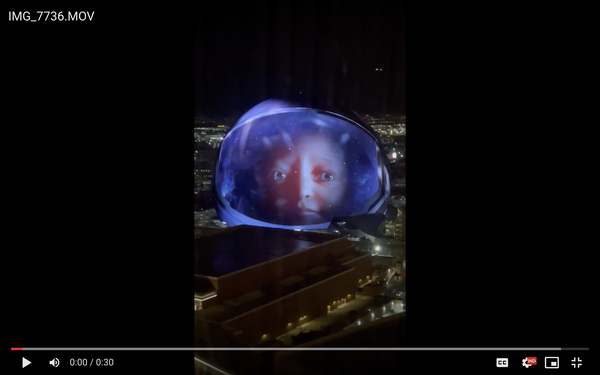
Las Vegas conjures up all types of images. From Sin City in the
1930s to the Rat Pack era with stars like Dean Martin and Frank Sinatra, to kid-friendly events at Circus
Circus in the 1960s and 1970s.
The city has flourished through good and bad economic times, until the advent of COVID-19. In 2021, Las Vegas became a ghost town forcing digital out-of-home
(DOOH) media businesses to rethink strategies. The city needed tourists at a time when tourism fell.
COVID nearly destroyed the Las Vegas economy, leaving streets and casinos empty. Despite
the decline, technology investments continued to flow into Las Vegas.
advertisement
advertisement
While the city has always been a bit of an outlier and an adult playground, it is now attracting billions of dollars in
technology media investments.
Las Vegas, it seems, wants to become the media center of the world. Not in comparison with the lights of Broadway and Times Square in New York City, but
supported by robotics, advanced and stunning visual displays, and immersive technologies.
Executive Chairman James Dolan of Sphere Entertainment Co. set out to change entertainment and
media in Las Vegas, building the largest sphere in the world with 17,600 seats and indoor screen that support 16K x 16K resolution through 256 million pixels.
The Las Vegas Sphere
opened in late September, with U2 as its first performer in a residency titled U2:UV Achtung Baby Live.
And the ad dollars began rolling in from brands like Microsoft Xbox, Formula 1 and
Heineken, Pandora, Sony PlayStation Spiderman 2, and Google Cloud, among others.
Google Cloud ran an advertisement on the Las Vegas Sphere during the AWS Re:Invent, event, which
took place in Las Vegas, Nevada from November 27 to December 1, 2023. I got a glimpse of one this past week.
Reports estimate the cost of running an ad on the Las Vegas Sphere at
about $450,000 per day or $650,000 per week.
In
2022, Alphabet, Google's parent company, allocated about $4.37 billion for advertising in the United States, up from 3.6 billion in the previous year.
The kaleidoscope for advertisers lives on
the outside of the building displayed on a digital out of home (DOOH) full-motion screen seen for miles and from the air through 1.2 million wraparound LED lights that continually morph into
different images to make the viewer think the Sphere moves, not the pictures displayed. The Sphere does not move.
The light patterns create an illusion through high-definition -- similar to a
DOOH display, but in much greater intensity, according to Lina Maggi, vice president of partnerships and head of OOH at BCN Visuals, a company that has created ads for some of the companies
advertising on the Las Vegas Sphere.
"TVs at home are a 4K, but this is a 16K [interior]," Maggi said. "People will see the images and think of it more as entertainment. They take out their
phones, shoot it, and share it with friends, which is the ultimate goal."
Anamorphic lenses are used to affect how images get fed into camera sensors that eventually
display the ad. They were primarily created so that a wider range of aspect ratios could fit in a standard film frame, but since it has changed to create something more custom.
Building the Sphere took mathematical calculations. Designers of the Sphere used theories like the Shannon-Hartley Theorem, which relates to the maximum amount of data that will transmit over a
noisy communications channel. At Sphere, the theory guided the development of ultra-fast WiFi so that people can interact with the screen simultaneously in the inside of the 366-foot tall and
516-foot-wide venue, the largest spherical structure in the world.
The Sphere also is home to Aura the Robot, the world's most advanced humanoid robot using AI. While Aura is among the most
expressive and life-like humanoid robots in the world, there are five robots around the Atrium. Each focuses on one fundamental aspect of human ability: connection, creativity, innovation, longevity,
and productivity.
